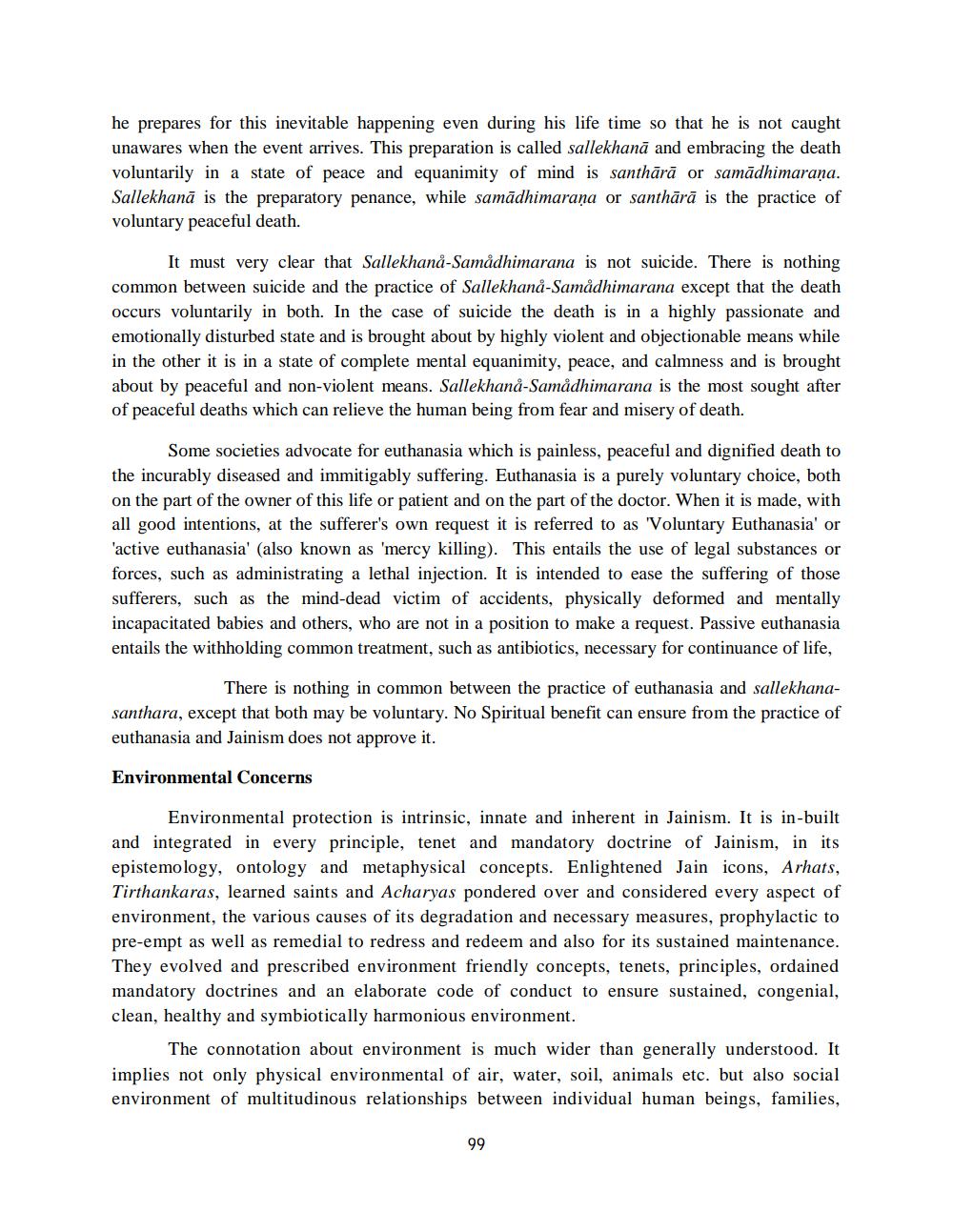________________
he prepares for this inevitable happening even during his life time so that he is not caught unawares when the event arrives. This preparation is called sallekhana and embracing the death voluntarily in a state of peace and equanimity of mind is santhārā or samādhimaraṇa. Sallekhana is the preparatory penance, while samadhimaraṇa or santhārā is the practice of voluntary peaceful death.
It must very clear that Sallekhanå-Samådhimarana is not suicide. There is nothing common between suicide and the practice of Sallekhanå-Samådhimarana except that the death occurs voluntarily in both. In the case of suicide the death is in a highly passionate and emotionally disturbed state and is brought about by highly violent and objectionable means while in the other it is in a state of complete mental equanimity, peace, and calmness and is brought about by peaceful and non-violent means. Sallekhanå-Samådhimarana is the most sought after of peaceful deaths which can relieve the human being from fear and misery of death.
Some societies advocate for euthanasia which is painless, peaceful and dignified death to the incurably diseased and immitigably suffering. Euthanasia is a purely voluntary choice, both on the part of the owner of this life or patient and on the part of the doctor. When it is made, with all good intentions, at the sufferer's own request it is referred to as 'Voluntary Euthanasia' or 'active euthanasia' (also known as 'mercy killing). This entails the use of legal substances or forces, such as administrating a lethal injection. It is intended to ease the suffering of those sufferers, such as the mind-dead victim of accidents, physically deformed and mentally incapacitated babies and others, who are not in a position to make a request. Passive euthanasia entails the withholding common treatment, such as antibiotics, necessary for continuance of life,
There is nothing in common between the practice of euthanasia and sallekhanasanthara, except that both may be voluntary. No Spiritual benefit can ensure from the practice of euthanasia and Jainism does not approve it.
Environmental Concerns
Environmental protection is intrinsic, innate and inherent in Jainism. It is in-built and integrated in every principle, tenet and mandatory doctrine of Jainism, in its epistemology, ontology and metaphysical concepts. Enlightened Jain icons, Arhats, Tirthankaras, learned saints and Acharyas pondered over and considered every aspect of environment, the various causes of its degradation and necessary measures, prophylactic to pre-empt as well as remedial to redress and redeem and also for its sustained maintenance. They evolved and prescribed environment friendly concepts, tenets, principles, ordained mandatory doctrines and an elaborate code of conduct to ensure sustained, congenial, clean, healthy and symbiotically harmonious environment.
The connotation about environment is much wider than generally understood. It implies not only physical environmental of air, water, soil, animals etc. but also social environment of multitudinous relationships between individual human beings, families,
99




